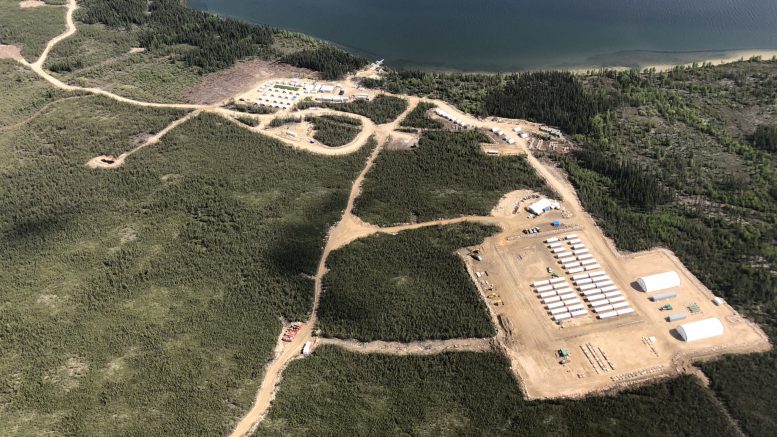NexGen Energy (TSX: NXE; NYSE: NXE; ASX: NXG) says inflation and improved engineering have pushed construction costs for its permits-stage Rook I uranium project in Saskatchewan nearly 70% higher than a 2021 estimate.
The updated capital cost is $2.2 billion compared with $1.3 billion in a feasibility study three years ago, NexGen said on Thursday. Using a long-term uranium price of US$95 per lb., the project is expected to generate an average annual after-tax free cash flow of $1.9 billion in its first five years vs $2 billion in the earlier study.
Operating costs would nearly double to $13.86 per lb. of uranium oxide (U3O8) over the mine’s life from $7.58 per lb. U3O8 in the 2021 study. The project’s after-tax net present value falls to US$6.3 billion from $7.7 billion, both at an 8% discount rate. The internal rate of return is 45% vs. 79%.
“Unsurprisingly, costs have increased vs. the feasibility study estimate in 2021 but, at first glance, are probably slightly higher than market expectations,” Alexander Pearce, a mining analyst at BMO Capital Markets wrote in a note on Thursday. “Despite an increase in cash cost to about US$10 per lb., the asset would remain one of the largest and lowest cost uranium mines globally.”
Shares in NexGen closed 12% lower on Thursday in Toronto at 8.10¢ apiece as wider markets plunged on recession fears. The stock has traded in a 52-week range of $6.06 to $12.14 and the company is valued at $4.6 billion.
Federal approval
NexGen is gearing up to start construction once a federal review process completes, perhaps this year. The company is among uranium companies such as Cameco (TSX: CCO; NYSE: CCJ) benefiting from governments embracing nuclear energy to fight climate change while the price of the heavy metal more than doubled from a year ago to US$106 per lb. in January. It has since eased to US$84.45 per lb. on Thursday, according to Trading Economics.
NexGen says it’s in talks with potential project funders including commercial banks, export credit agencies and alternative sources. Some of them might fully satisfy the project’s capital costs in combination with the company’s current cash and liquid investments, it said.
“The updated capital cost presents an all-encompassing spend to bring the Rook I project into production based on robust, proven mining and construction methodologies, with a payback period of 12 months,” CEO Leigh Curyer said in the release.
“Our commitment to developing this project to the highest environmental standards ensures sustainable and responsible operations from the outset while delivering industry-leading profitability and local community consultation.”
BMO’s Pearce said his base case net present value for the project is $5.1 billion at a 10% discount rate and US$75 per lb. long-term uranium price, which also assumes a longer mine life of more than 14 years compared with the 2021 study’s 11 years.
Athabasca Basin
The project in Saskatchewan’s far north Athabasca Basin uranium district has provincial environmental approval. Rook I is expected to produce 21.7 million lbs. of U3O8 annually while annual production capacity remains at up to 30 million pounds, according to the update. The project holds 3.7 million measured and indicated tonnes grading 3.1% U3O8.
Sustaining capital costs are estimated at $785 million, averaging $70 million per year, more than double the $33 million a year in the feasibility study, the update showed.
The new capital costs reflect about $310 million in price inflation since 2020 and about $590 million from enhanced engineering and procurement activity since March 2021, the company said. It attributed $2.65 per lb. of U3O8 more in operating costs due to inflation and an additional $3.63 per lb. increase from advanced design developments, procurement and operational and environmental improvements.
The updated costs reflect the advancement of project engineering from 18% complete when the feasibility study was done to about 45% finished now, the company said.
Rook I plans to process tailings underground as it mines to reduce environmental risks and lower closure costs to $70 million at the end of the mine’s life. NexGen says the amount is materially less than other uranium mines in Canada.


Be the first to comment on "NexGen’s Rook I uranium project costs soar"